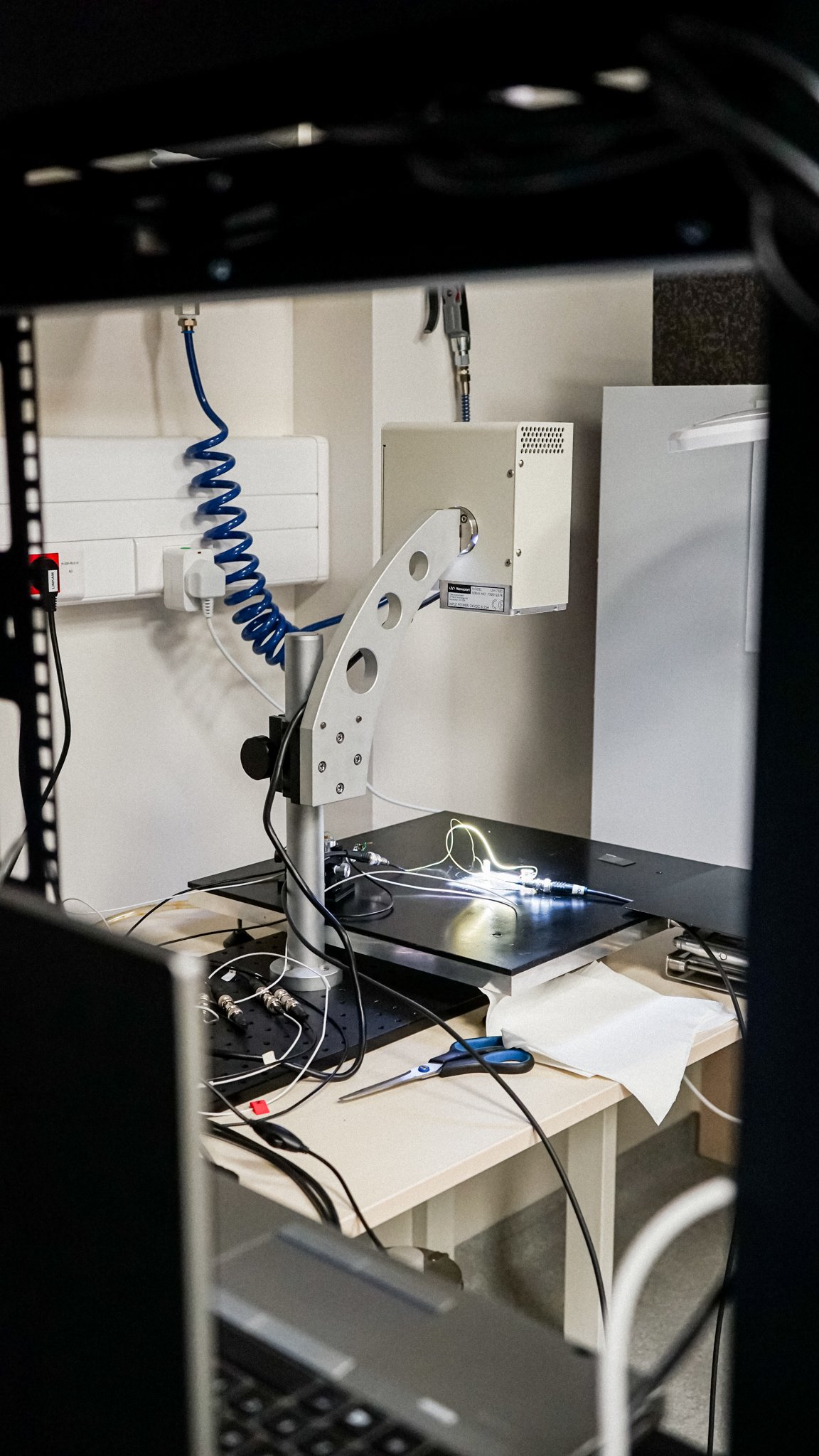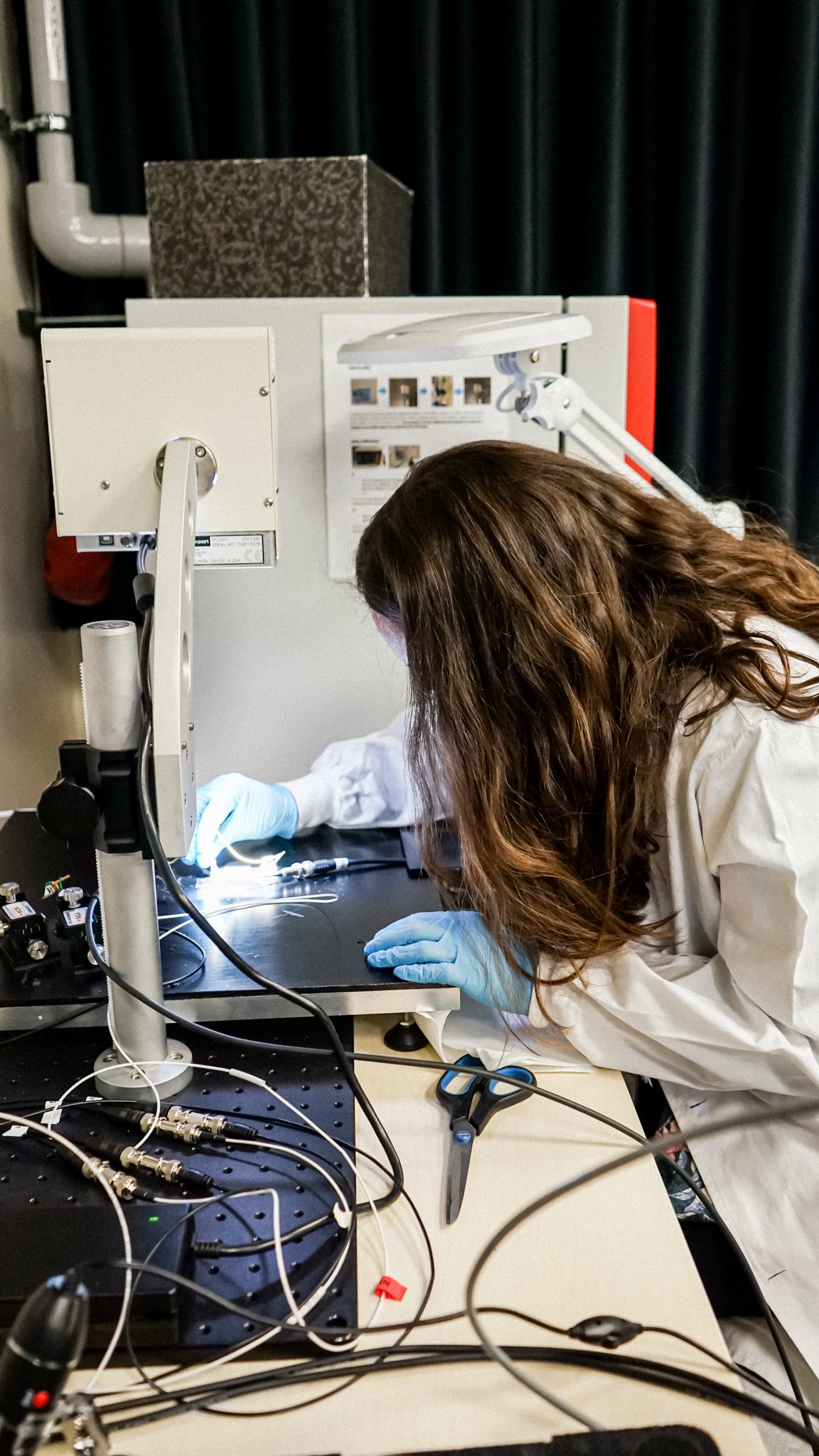
Photovoltaic (PV) applications a path to the future, an interview with Jennifer Teixeira
April 27, 2022
Jennifer Teixeira holds a PhD in Physics from the University of Aveiro. She dedicated her research to understanding the impact of absorbers’ electronic structure on chalcogenide (ultra)thin-film solar cells’ performance. Jennifer trusts that a solid fundamental knowledge of materials’ properties is critical for a continuous fostering of innovative materials through the rational use of natural resources, in order to meet the urge for sustainable energy solutions, suiting the circular economy principle.
Tell us about your experience and path at INL
I’m a Research Fellow at the Nanofabrication for Optoelectronic Applications (NOA) group since June 2019. In the group, I’m involved in the research line for the development and fabrication of high-performance substrates, based on passivation and light management strategies, for photovoltaic (PV) applications.
I came from a more fundamental and theoretical material science background, and at NOA I had the opportunity to apply my previous know-how in a more technological ecosystem through several H2020, FCT, and PT2020 projects.
You’ve been recently granted FCT support for Scientific Employment as Junior Researcher. Can you tell us how this project will help your career goals?
The CEEC Individual funding will allow me to work on fundamental material science applied to energy transition systems. The aim of the project is to design and develop nano- and multi-layered structures to perfectly meet the weaknesses of already existing technologies. So far, this project opens a new research line for advanced tailored materials in the NOA Research Group; thus, we expect to create a solid path on the topic of functionalised materials, which will encourage new funding opportunities on the matter.
How would you explain the importance of your research to a non-scientific person?
Despite the obvious need for clean and sustainable energy systems, we are now witnessing the importance to have decentralized energy solutions. So far, this 2022 scenario asks for fast time-to-market energy solutions, as emerging technologies will struggle to meet the current needs in a short time span.
One emerging concept that meets perfectly the decentralization label is the building-Integrated Photovoltaics (BIPV), which provides a spatial solution to incorporate PV systems into buildings, allowing for hundreds of GW to be installed worldwide without requiring any additional land. Moreover, this energy supply concept is the segment that best fits the current urbanization scenario. However, there are still several challenges for BIPV to overcome.
Here at NOA, we explore novel solar cell concepts for traditional 2nd PV generation fostering high performance, while meeting environmental and economically sustainable targets; more recently we started looking for solutions that gather conversion efficiency, durability, and aesthetics to meet the building industry stakeholders for BIPV.
What inspires you and excites you about science?
Science and R&D as key dimensions of meaningful work. So, knowing that the small prototypes that we are developing on a day-to-day basis have a much broader purpose. In our case, we are looking for a more sustainable energy system.






